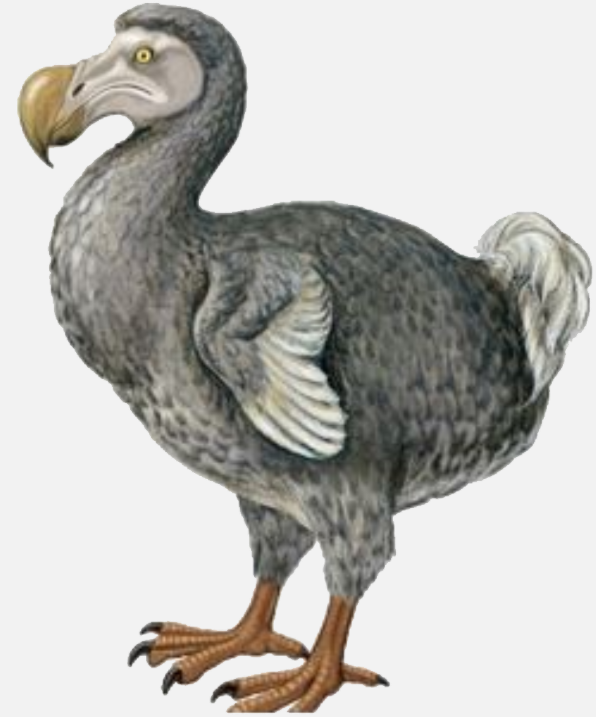The sixth mass extinction currently in progress differs from earlier mass extinctions because
The rates of extinction are lesser
Megafauna would be unaffected
It is driven by human activities
Only terrestrial species will be lost
The correct Answer is:C
To answer the question regarding how the sixth mass extinction differs from earlier mass extinctions, we can break it down into the following steps:
1. Identify the Current Mass Extinction:
The sixth mass extinction is also known as the Holocene extinction, which is currently ongoing.
2. Understand the Cause of the Sixth Mass Extinction:
Unlike previous mass extinctions that were primarily caused by natural events (like volcanic eruptions, asteroid impacts, etc.), the sixth mass extinction is largely driven by human activities. This includes habitat destruction, climate change, pollution, overfishing, and the introduction of invasive species.
3. Compare with Earlier Mass Extinctions:
Earlier mass extinctions, such as the Permian-Triassic extinction or the Cretaceous-Paleogene extinction, were caused by natural phenomena. The current extinction is unique because it is primarily a result of anthropogenic (human-induced) factors.
4. Evaluate the Options Given:
- Option A: The rate of extinction is lesser - This is incorrect; the current rate of extinction is significantly higher.
- Option B: Megafauna would be lost - This is not a distinguishing factor; many species are at risk, not just megafauna.
- Option C: Only terrestrial species will be lost - This is incorrect; both terrestrial and aquatic species are at risk.
- Option D: It is driven by human activities - This is the correct answer, as it highlights the unique cause of the current extinction event.
5. Conclude the Answer:
The sixth mass extinction differs from earlier mass extinctions primarily because it is driven by human activities.
Final Answer:
The sixth mass extinction currently in progress differs from earlier mass extinctions because it is driven by human activities.
The sixth mass extinction is also known as the Holocene extinction, which is currently ongoing.
Unlike previous mass extinctions that were primarily caused by natural events (like volcanic eruptions, asteroid impacts, etc.), the sixth mass extinction is largely driven by human activities. This includes habitat destruction, climate change, pollution, overfishing, and the introduction of invasive species.
Earlier mass extinctions, such as the Permian-Triassic extinction or the Cretaceous-Paleogene extinction, were caused by natural phenomena. The current extinction is unique because it is primarily a result of anthropogenic (human-induced) factors.
- Option A: The rate of extinction is lesser - This is incorrect; the current rate of extinction is significantly higher.
- Option B: Megafauna would be lost - This is not a distinguishing factor; many species are at risk, not just megafauna.
- Option C: Only terrestrial species will be lost - This is incorrect; both terrestrial and aquatic species are at risk.
- Option D: It is driven by human activities - This is the correct answer, as it highlights the unique cause of the current extinction event.
The sixth mass extinction differs from earlier mass extinctions primarily because it is driven by human activities.
The sixth mass extinction currently in progress differs from earlier mass extinctions because it is driven by human activities.
Topper's Solved these Questions
- BIODIVERSITY AND CONSERVATIONBOOK - AAKASH SERIESCHAPTER - BIODIVERSITY AND CONSERVATIONEXERCISE - EXERCISE-I How do we conserve Biodiversity?
8 Videos
- BIODIVERSITY AND CONSERVATIONBOOK - AAKASH SERIESCHAPTER - BIODIVERSITY AND CONSERVATIONEXERCISE - EXERCISE-II Meaning and Levels of Biodiversity
1 Video
- BIODIVERSITY AND CONSERVATIONBOOK - AAKASH SERIESCHAPTER - BIODIVERSITY AND CONSERVATIONEXERCISE - EXERCISE-I The Importance of Species Diversity to the Ecosystem
9 Videos
- ANIMAL KINGDOM BOOK - AAKASH SERIESCHAPTER - ANIMAL KINGDOM EXERCISE - EXERCISE -III (Previous AIPMT/NEET Questions)
35 Videos
- BIOLOGICAL CLASSIFICATIONBOOK - AAKASH SERIESCHAPTER - BIOLOGICAL CLASSIFICATIONEXERCISE - EXERCISE-III (Previous AIPMT/NEET Question)
37 Videos
Similar Questions
Knowledge Check
An arachnid differs from a crustacean because :
Aarachnids lack antennaeBarachnids are mostly aquatic and crustaceans are mostly terrestrialConly arachnids shed their exoskeletonsDonly arachnids have two major body segments of cephalothorax and abdomenMillipedes differ from centipedes because :
Acentipedes generally have fewer legs per segmentBmillipede is herbivorous, and the centipede is carnivorousClarge centipedes are dangerous to handle but millipedes are safeDall of the above are correct
Since the origin of life on Earth, there were five episodes of mass extinction of species .
(i) How is the 'Sixth Extinction', presently in progress, different from the previous episodes ?
(ii) Who is mainly responsible for the 'Sixth Extinction' ?
(iii) List any four points that can help to overcome this disaster.
View SolutionHow is the presently occuring species extinction different from the earlier mass extinctions ?
View SolutionAdenosine differs from cytosine because
View SolutionNervous system is different from endocrine system because
View SolutionThis bird has become recently extinct from

View SolutionCamphor is often used in molecular mass determination because
View Solution
